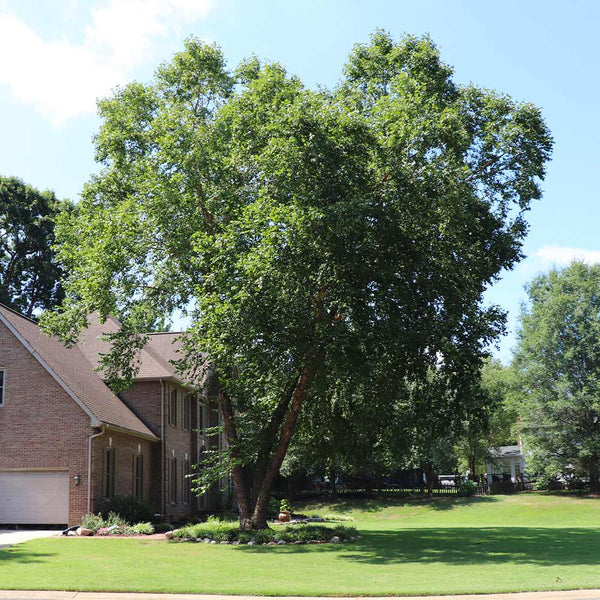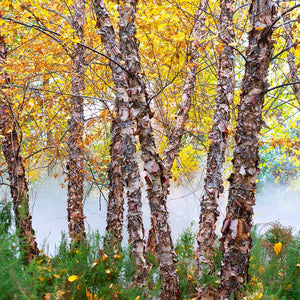Heritage River Birch
Product Details
 Growing Zones 4-9
Growing Zones 4-9
| Soil Type | Acidic |
| Sunlight | Full, Partial |
| Drought Tolerance | Good |
| Mature Height | 40-60 Feet |
| Mature Width | 20-30 Feet |
| Growth Rate | Fast |
| Fall Color | Yellow |
| Shipping Restriction | AK, AZ, HI, OR |
Growing up to 50-70 feet tall, the Heritage River Birch is definitely a statement tree. It grows wild along the Missouri riverbanks but can be adaptable to nearly any climate condition. Whether it is from Connecticut to Texas, the Heritage River Birch tree can survive!
It is noted for its unique peeling bark - featuring pinks and reds it contrasts against the white, new bark growth underneath.
This tree is also fast growing and noticeably deer resistant. It is also heat- and drought-tolerant, and can withstand flooding to an extent too. Overall, it's quite adaptable and hardy to almost any weather event- an important need in today’s variable weather conditions!
Growing up to 30 inches per year, this is one of the trees you can plant for very quick results in your space. It will also boast a brilliant yellow-leaved display in the Fall, as well as contrasting bark in the winter.
Finally, it is an important larval food source for butterflies like Canadian Tiger Swallowtails and Mourning Cloaks. Get out your binoculars because you will be doing some butterfly spotting with this one!
How tall does this tree grow?
The Heritage River Birch can grow up to 70 feet tall!
What color does this tree look like in the Fall?
It bears a brilliant yellow display of color in the autumn.
Is this tree hardy to cold temperatures?
Yes! It can tolerate up to -20°F.
Planting
Plant in an area of full sun with fairly good drainage. Dig a hole three times the width and depth of the root ball. Place the root ball in the hole, being careful to keep it straight while backfilling in soil around it. Water generously (a hose on slow trickle for 1-2 hrs) upon first planting. Mulch on top as desired.
Watering
Water gently with a trickling hose for up to 2 hrs during growth times. Back off watering at the end of August and into the colder, dormant months. Mulching can also help insulate moisture in and ration watering.
Fertilizing
Consider using a fertilizer such as 10-10-10 (mildly acidic) to support growth in spring and summer.
Maintenance
Prune young branches back (less than 2 inches wide) in late summer to early fall.















